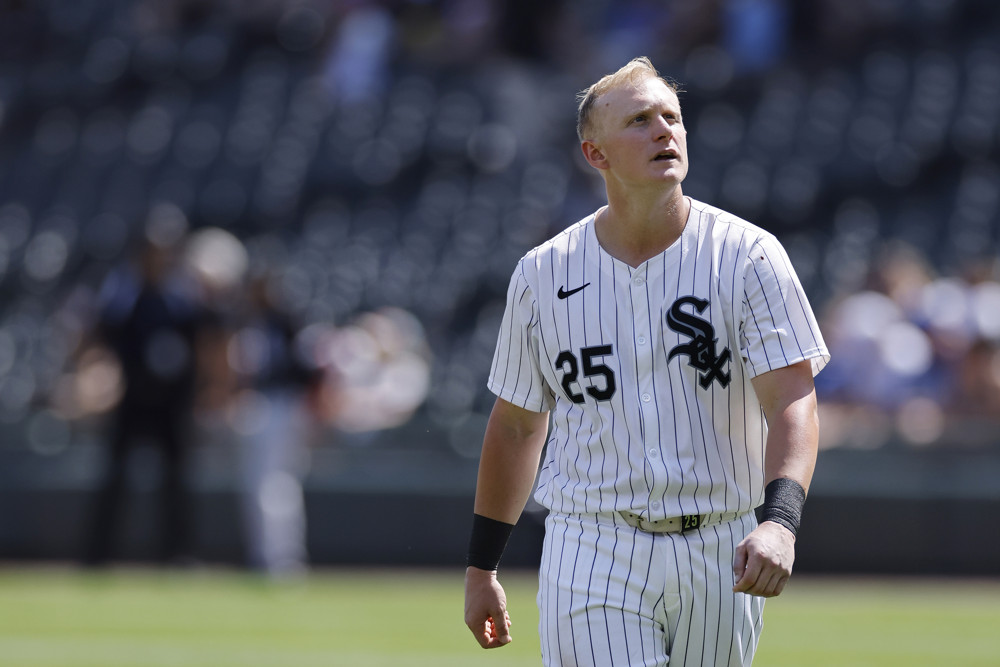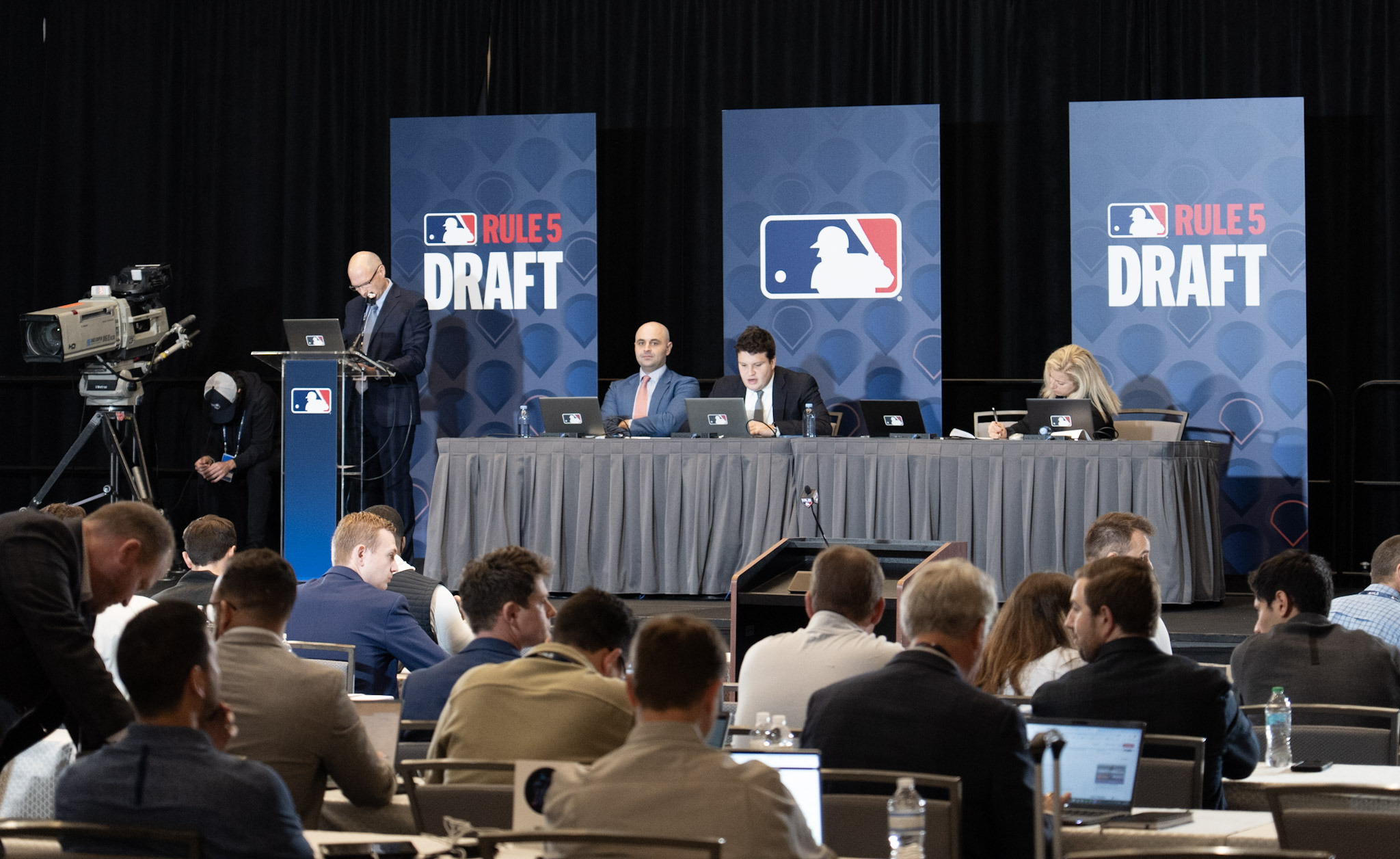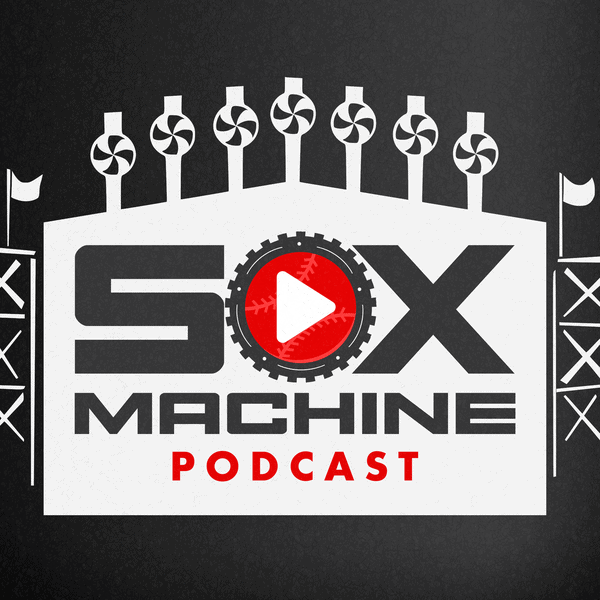If New Comiskey Park could be distilled into ballplayer form, it'd be Andrew Vaughn.
Chris Getz didn't say it in so many words -- trust us, we would've quoted him earlier if he did -- but that's the sense I got from his comments about the trade that sent the former third-overall pick to Milwaukee for short-term rotation ballast in Aaron Civale Friday morning.
Just like New Comiskey prioritized a bunch of features that were popular at the time, Vaughn was selected where he was ranked, as Baseball America and MLB Pipeline had both had him No. 3 in the 2019 draft class behind Adley Rutschman and Bobby Witt Jr. Just like New Comiskey isn't anywhere close to the worst ballpark to ever exist, Vaughn wasn't out of place on a major league field. He was an average hitter (101 OPS+) over his first four seasons until the wheels fell off this year. Just like what is now called Rate Field has its charms despite ranking where it ranks, Vaughn had his defenders despite his game failing to coalesce in a way that transcended what his WAR said.
But just like the ballpark that popped up on the other side of 35th and Shields, a bunch of suboptimal decisions went into the drafting and development stages with Vaughn, and when everything had set, everybody had no choice but to marinate in their disappointment and contemplate the what-ifs.
In hindsight, the biggest flaw was abundantly clear: Vaughn was a right-handed, slow-footed, 5-foot-10-inch first baseman, which Getz phrased in a different way:
With players like Vaughn where there's so much pressure on the bat, it can become an issue in regards to managing a roster with some of the positional limitations.
But the front office did little to mitigate the natural limitations. They didn't let him work his way up through Double-A and Triple-A, instead trusting that the alternate training site during the COVID-shortened season would serve the same purpose, and spare them the cost of seeking an external solution that would grant Vaughn more time. On top of that, they regularly played him in the outfield for two full seasons, and White Sox fans have had years to debate how much those factors set him back.
On Friday, Getz introduced a new element to the discussion, in that the White Sox's chronic inability to find viable left-handed hitters left Vaughn exposed to the elements:
I do think it’s worth noting that being a right-handed hitter in our game right now can be really challenging. Especially if you don’t have alpha left-handed bats in the lineup to balance it. You’re facing right-handed pitching, both as starters because that’s the majority of the league, and you’re not getting the left-handed pitching opportunities in the bullpen because perhaps there isn't a reason for teams to do that. It makes it that much more challenging, and I think that’s a factor as well.
You can argue which particular problem is the equivalent of orienting the park away from the skyline, building two levels of luxury suites with no upper deck overhang, preferring a sea of parking lots to developing the area, opening with blue seats instead of green, etc., but the list of first- and second-guessable decisions is long enough that it's a miracle he averaged 18 homers a year.
Vaughn's high floor is what made him the consensus No. 3 option, but when looking back at the top of the 2019 draft class, the Sox could've chosen differently. CJ Abrams was the most popular alternative, and Josh stumped for that choice a couple of times in his run-up to draft day. Abrams instead went to San Diego with the sixth pick, and although he was traded to Washington for Juan Soto and had to overcome a couple of upper-level stumbles, he's now on track to hit on his projection, and is part of a larger group that's leaving Vaughn in the dust.
- Orioles: Adley Rutschman, 14.1 WAR
- Royals: Bobby Witt Jr., 17.8 WAR
- White Sox: Andrew Vaughn, -0.4 WAR
- Marlins: JJ Bleday, 1.1 WAR
- Tigers: Riley Greene, 10.0 WAR
- Padres: CJ Abrams, 8.7 WAR
Perhaps Vaughn's lower ceiling would've diminished the returns no matter which team picked him, but it didn't help that he was drafted by a White Sox team at the end of Nick Hostetler's tenure as scouting director. His trademark was bypassing the most tantalizing ceiling and instead picking the player who required the least amount of work to get to the majors:
- 2016: Zack Collins and Zack Burdi
- 2017: Jake Burger
- 2018: Nick Madrigal
- 2019: Andrew Vaughn
All reached the big leagues, but none hit (or in Burdi's case, pitched) the way the White Sox originally envisioned, and none had any secondary skills to provide alternate avenues toward contributing. Instead, they had to hold down spots on a roster full of athletically limited players, which exacerbated their flaws further.
Revisiting the weeks before Vaughn's major league debut during spring training in 2021, the mistakes in his development were nearly further amplified by Rick Hahn's obsession with controlling costs:
The Chicago White Sox were hoping to lock up prized prospect Andrew Vaughn to a long-term contract before he makes his major-league debut.
Talks have cooled.
The affection and enthusiasm for the first baseman/DH has not.
The White Sox refuse to follow many other teams and play the service-time manipulation game by keeping Vaughn in the minors. Now barring injury, Vaughn is expected to be on their opening-day roster as the primary DH.
Had Hahn had his druthers, Vaughn would've joined Tim Anderson, Yoán Moncada, Eloy Jiménez and (presumably) Luis Robert Jr. as players who signed hefty extensions, but didn't produce enough to warrant exercising the team options. As it worked out, Vaughn actually provided the counterpoint to the extension-or-bust mindset, as it's the one way the pick didn't box itself in. Because the White Sox were content to follow the pay-as-you-go path, they didn't saddle themselves or their trade partners with future obligations, and thus were able to pivot from him and acquire a player who better served their purposes, even if Civale is inefficiently paid himself.
The White Sox counted on Vaughn being able to take the torch from José Abreu, continuing the organization's enviable decades-long stability at first base, but whether the team didn't equip him for the task or he simply didn't have what it took, they had to abandon the plan earlier than anticipated. That the White Sox made this trade while plotting their move from a ballpark that's not even half the age of their previous home, due to all the poor decisions along the way? A more New Comiskey ballplayer will never be found.






